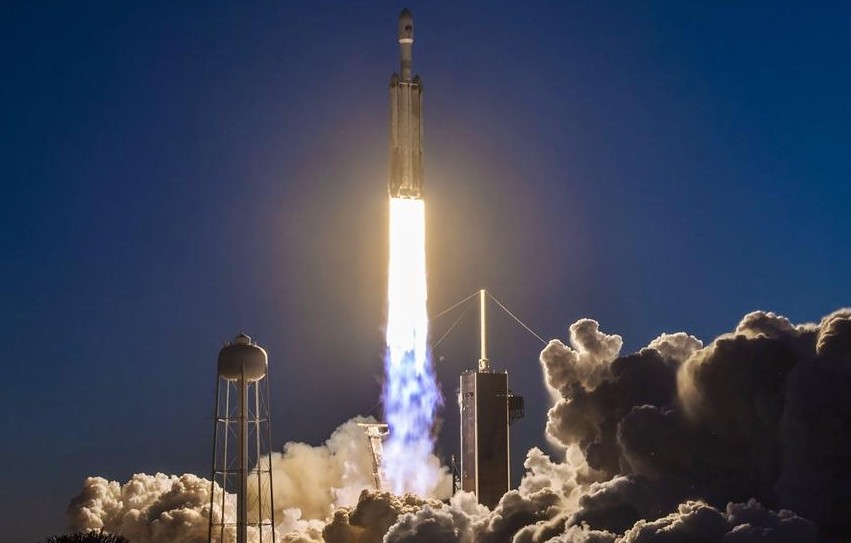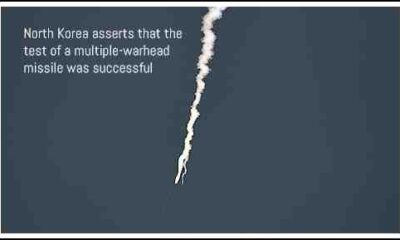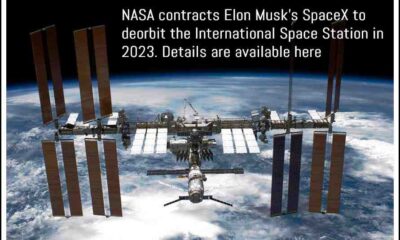Latest News
Musk’s SpaceX launches twin rockets and a secret satellite.
Published
1 year agoon

Musk’s SpaceX Most potent rocket, the Falcon-Heavy, is propelled by three Falcon-9 first stages that have been modified
In Short:-
- The almost 64 metric tonnes that Falcon Heavy can lift into space
- The Falcon-Heavy has launched five times so far.
- There are 27 Merlin engines in the rocket.
Elon Musk’s SpaceX launched a secret mission for the US Space Force in the first Falcon-Heavy launch of the year (USSF). Early on Monday morning, Florida’s Kennedy Space Center (KSC) saw the launch of SpaceX’s most potent rocket.
Continuous Broadcast Augmenting SATCOM 2 (CBAS-2) was launched into a geostationary orbit more than 35,000 kilometres above Earth and served as the mission’s main satellite. The satellite offers communications relay capabilities in support of our senior officials and military commanders, according to a spokeswoman.
Musk’s SpaceX Officials from the Space Force said in a statement to space.com that the goal of CBAS-2 is to improve current military satellite communication capabilities and continuously disseminate military data using space-based satellite relay systems.
The company’s most potent rocket, the Falcon-Heavy, is propelled by three Falcon-9 first stages that have been modified. The cargo is pushed into the predetermined orbit around the planet by the central booster, which is fastened to the other two launchers.
Read Also: According to a study, the majority of chronic Covid symptoms go away one year following a moderate infection
The Falcon-Heavy has performed five launches and eleven landings so far. The Falcon Heavy is one of the most potent operational rockets in the world, capable of launching approximately 64 metric tonnes into space. At launch, the rocket’s 27 Merlin engines produce more than 5 million pounds of thrust, or the equivalent of about 18 747 aircraft.
According to a Musk’s SpaceX update, “This was the second launch and landing of these Falcon Heavy side boosters, which previously supported USSF-44.” The drone captured an iconic shot of the twin boosters returning to the launch pad as they landed in Landing Zones 1 and 2, respectively, at the Cape Canaveral Space Force Station.
The Long Duration Propulsive ESPA (LDPE)-3A payload adaptor, which can store up to six tiny satellites, was also carried by the mission, and five of those slots were occupied, according to EverydayAstronaut.com.
You may like
-


North Korea asserts that the test of a multiple-warhead missile was successful
-


The Student Wing of Congress storms the Exam Body NTA office and locks it from within
-


“During President Murmu’s address to Parliament, PM Modi was shown 73 times, and LoP Rahul Gandhi was shown six times”: Congress
-


NASA contracts Elon Musk’s SpaceX to deorbit the International Space Station in 2023.
-


A Caution For The CBI In The Delhi Court’s Arvind Kejriwal Custody Order
-


Bar Council of India requests that bar associations abstain from demonstrating in opposition to new criminal laws

